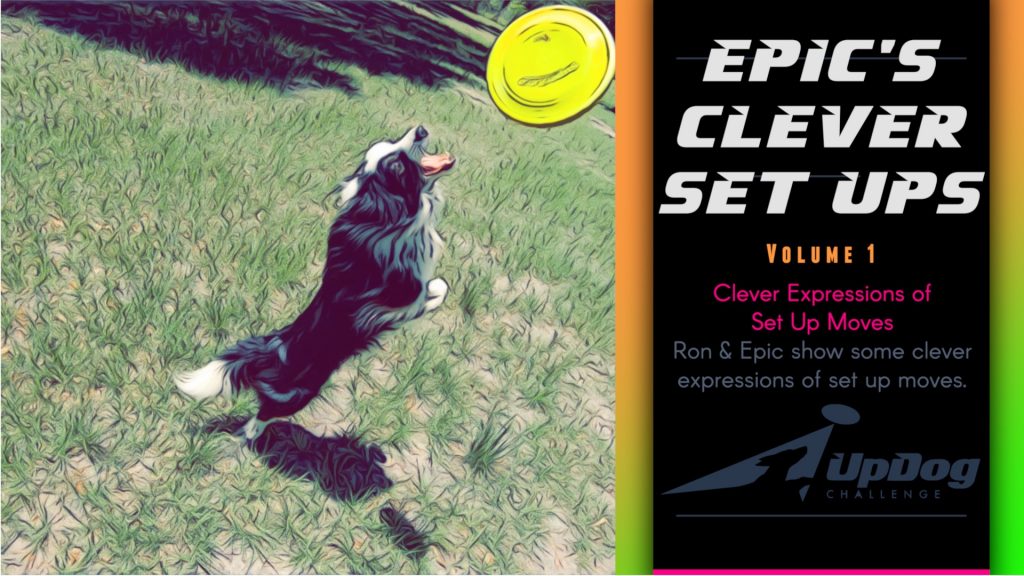
Epic’s Clever Set Up Moves | Volume 1 Part I | Scoots & Fakies
Disc Dog freestyle sequences have a starting position, often it is Front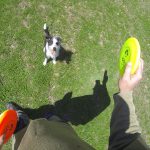 Front is a stable position directly in front of the handler. Front is an traditional obedience skill. Usually your dog sits in this position, but standing is often acceptable as well, especially in... More PositionIn the Play+ philosophy, "Position" is the final stage within the "Next" phase of a Cycle of Play. It acts as a pivotal link between the "Next" phase and a new "Now" phase. More – dog standing in front of the handler. Set Up Moves
Front is a stable position directly in front of the handler. Front is an traditional obedience skill. Usually your dog sits in this position, but standing is often acceptable as well, especially in... More PositionIn the Play+ philosophy, "Position" is the final stage within the "Next" phase of a Cycle of Play. It acts as a pivotal link between the "Next" phase and a new "Now" phase. More – dog standing in front of the handler. Set Up Moves Set Up Moves are tricks that are used to establish timing and position in disc dog freestyle. Traditional tricks include: Around, Through, Backwards Through, and Scoot, but any or all of your tricks,... More are ways of getting set up in time and space. They get the team into position and in time.
Set Up Moves are tricks that are used to establish timing and position in disc dog freestyle. Traditional tricks include: Around, Through, Backwards Through, and Scoot, but any or all of your tricks,... More are ways of getting set up in time and space. They get the team into position and in time.
Most players have a go-to Set Up Move, or 3, but it is important to have a variety of entries into the positions that start sequences to keep things interesting and to display and enhance flow.
In this epic video there are 13 different set up moves, some are fairly standard, and some are pretty clever. Below we’ll name and define them and talk about usage and pros and cons.
Scoot Variations
A Scoot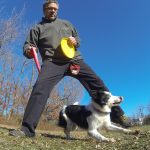 A Scoot is a Set Up Move where the dog scoots backwards between the handler’s legs. It’s a really clever Set Up Move, the image of your dog spinning around and shimmying backwards... More is a move where the dog backs up underneath the handler. Sometimes called “Parking” or “Home, the Scoot is an interesting Set Up Move. It tends to look a little bit glitchy, like a record scratching or video rewinding or distorting.
A Scoot is a Set Up Move where the dog scoots backwards between the handler’s legs. It’s a really clever Set Up Move, the image of your dog spinning around and shimmying backwards... More is a move where the dog backs up underneath the handler. Sometimes called “Parking” or “Home, the Scoot is an interesting Set Up Move. It tends to look a little bit glitchy, like a record scratching or video rewinding or distorting.
Scoots are really cool and can be quite interesting, but over-used, they can also damage and reduce flow by creating too many hard stops and fast starts reducing the smoothness of movement that tends to define Flow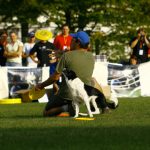 Flow is a key component of the modern day disc dog game. Keeping your dog moving with seamless, ever moving and flowing sequences with little to no set up time is the goal... More.
Flow is a key component of the modern day disc dog game. Keeping your dog moving with seamless, ever moving and flowing sequences with little to no set up time is the goal... More.
Muppet Scoot – 0:16
The Muppet Scoot was created by yours truly back in 2010. It is a Scoot from Heel position (a move we call “Get Back” outlined below) that resolves or releases into heel position.
The trick to this move is getting the dog into Heel position on the fly. Establishing Heel position is super easy if it is the handler that turns and adjusts position. The handler simply reads the dog’s line and times a spinning movement that creates Heel position while the dog is running.
Once the dog is in Heel position and the scoot is happening, the handler continues to spin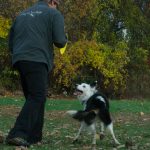 Spins and Twists are tricks where the dog spins 360 degrees in a clockwise or counter clockwise fashion. Spin is clockwise and Twist is counter clockwise so it is important to have a... More, passing the dog on the exit of the Scoot and pulling the dog back into Heel position. This can lead to a Working Flank
Spins and Twists are tricks where the dog spins 360 degrees in a clockwise or counter clockwise fashion. Spin is clockwise and Twist is counter clockwise so it is important to have a... More, passing the dog on the exit of the Scoot and pulling the dog back into Heel position. This can lead to a Working Flank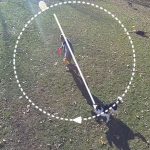 The Working Flank is a moving position. On a Working Flank the dog is out to your side some distance and holds position, moving with you as you move around the field. The... More or can resolve in a frozen Heel position.
The Working Flank is a moving position. On a Working Flank the dog is out to your side some distance and holds position, moving with you as you move around the field. The... More or can resolve in a frozen Heel position.
Be sure to give the verbal cue while the dog is at least 2-3 yards away from the entry and before making any physical move towards heel position. I just use my “Get Back” cue, as the dog’s job in the Muppet Scoot is no different from a normal “Get Back”. This will help the dog hold his or her line and look for the proper entry as you are spinning into position.
Scoot 0:31
The normal Scoot has the dog backing up between the handler’s legs from front to back. It resolves either with the dog standing behind the handler or with the dog firing out into Heel or Side position.
The trouble with this move is keeping the dog in a stable position at the resolution of the Scoot, as the dog tends to fire forward into Heel or Side positions (clock and counter flanks respectively…) due to reward placement and reward history.
Feel free to move yourself into position as the dog is Scooting, but I would resist the desire to lift your leg. Many judges to not like to see the leg lifted over the scooting dog, and I can’t say I blame them, it can ruin the effect.
Like the Muppet Scoot, be sure to cue verbally, before your first movement, while the dog is 3-5 yards away. The cues for this move should happen a bit earlier as the dog needs to start and finish the turn into the Scoot before reaching the handler. In the Muppet Scoot or Get Back, the dog does the entire move after reaching the handler, at and around the handler’s leg. The Scoot happens in front of the handler.
Establishing the stable position behind the handler is no small task. Epic smashes this. To cultivate a stable scoot behind the handler, simply work a Front Cross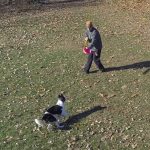 On a Front Cross, your dog switches Flanks in with you in front of them. From Clock to Counter Clockwise Flank or vice versa. Taken directly from the canine agility world, the Front... More a few times as the dog resolves the Scoot behavior and the dog will Scoot and wait for the handler to declare a working direction rather than firing forward into Heel or Side. Video soon to come…
On a Front Cross, your dog switches Flanks in with you in front of them. From Clock to Counter Clockwise Flank or vice versa. Taken directly from the canine agility world, the Front... More a few times as the dog resolves the Scoot behavior and the dog will Scoot and wait for the handler to declare a working direction rather than firing forward into Heel or Side. Video soon to come…
The Scoot resolution can be telegraphed and controlled by simply looking in the direction you want the dog. In this video, I look to my right, and Eppie is there. Had I looked to the left, he’d be there. It’s like magic. Give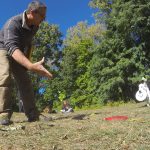 The Give is a retrieve to the hand. A cued Give is a foundational skill that is not super useful in the actual performance of disc dog freestyle, and has huge applications for... More it a shot.
The Give is a retrieve to the hand. A cued Give is a foundational skill that is not super useful in the actual performance of disc dog freestyle, and has huge applications for... More it a shot.
Get Back 0:45
As mentioned before the Get Back is a Scoot from Heel or Side position. In practice, the handler facilitates the initial position by reading the dog’s line and turning into the desired Heel or Side position.
Once the dog has committed to the Scoot, the handler stops spinning and turns back in the opposite direction of the spin used to set up the move. This turning back movement halts the dog and locks the dog down into a solid Front position useful for sequencing work.
To teach the Get Back, use cookies. Get into Heel or Side position and lure the dog forward and out (laterally away from you) so the dog looks out and away from the handler. This will turn the dog so the rear end is lined up for the scoot. Do the same with a lure with the disc and you should be good to go. Check out the link above for a solid lesson on this move…
Fakie Variations
A Fakie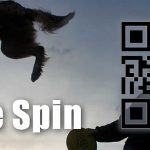 An athletic Set Up Move, the Fakie is a flip off of the handler's body (normally the chest) with no disc in flight or intended to be caught. It is usually named by... More is a flyball box turn off the handler. It is NOT a Rebound or Reverse Vault
An athletic Set Up Move, the Fakie is a flip off of the handler's body (normally the chest) with no disc in flight or intended to be caught. It is usually named by... More is a flyball box turn off the handler. It is NOT a Rebound or Reverse Vault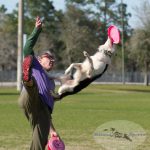 Essentially a flip off of a part of the handler's body, the Reverse Vault is a vault that stays on one side of the handler. If the dog starts the trick in front... More without a disc. Rebounds flip up for a target while Fakies flip down with no intended target. This distinction is HUGE and conflating the two tricks is a big problem with Rebound or Reverse Vault
Essentially a flip off of a part of the handler's body, the Reverse Vault is a vault that stays on one side of the handler. If the dog starts the trick in front... More without a disc. Rebounds flip up for a target while Fakies flip down with no intended target. This distinction is HUGE and conflating the two tricks is a big problem with Rebound or Reverse Vault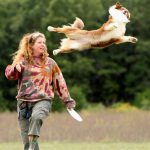 The dog uses the player´s body as a launching pad to jump for a disc. A Vault is a leaping catch from the handler’s body. The dog leaves the ground for the target... More success and safety.
The dog uses the player´s body as a launching pad to jump for a disc. A Vault is a leaping catch from the handler’s body. The dog leaves the ground for the target... More success and safety.
I kind of blew it on this video. I only utilized the Counter Clock “Twist” movement of the Fakie here and resolved the trick with the Clockwise Through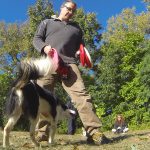 A Through is a set up move where the dog runs between the handler’s legs. The dog can move from front to back or side to side and can even weave. A Through... More behavior. I’ll be sure to address this in Volume 2.
A Through is a set up move where the dog runs between the handler’s legs. The dog can move from front to back or side to side and can even weave. A Through... More behavior. I’ll be sure to address this in Volume 2.
Just know that the Fakie, like all Set Up Moves, can and should be done in both directions and does not need to resolve into a clockwise Through behavior. It could resolve into a counter clock Through, or Front, Heel or Side Position… Get creative.
Fakie Twist (Counter Clock Fakie) 1:00
As mentioned above, Fakies can happen in both the clockwise and counter clock directions. In Epic’s Clever Set Ups Vol 1, I only use the counter clock variant. Twists are counter clock spins in my cuing system. Spins are clockwise.
Fakies, like rebounds, can happen off of any part of the handler’s body. I’m working off the chest here, but you could just as easily work off the leg, as I do next in the video, or off the hand, the foot, or back. If you can present a body part as an obstacle to flip off, the dog can Fakie off of it.
Notice that each of these Fakies has a different entry angle. The first one happens with Eppie starting over on my right at 2 o clock, the second happens from 12 o clock, and the third happens from 10 o clock in relation to the handler. These angles completely change the skill and require various amounts of flatwork skills to accomplish. Be sure to exercise a variety of angles for entry. A video for entry angles is on the agenda, so stay tuned…
Snazzy Twist | A Complex Set Up – 1:20
Each of the Fakies performed resolved into the Through behavior. When Set Up Moves combine frequently enough, sometimes they start to become something different.
I’ve done Fakie to Through for years, but it is only over the last few months that I realized that Fakie to Through really is it’s own Set Up Move – it’s become something more than the sum of it’s parts.
Snazzy Twist is a counter Fakie to a clock Through. We also do a Snazzy Spin, which is clock fakie to clock Through. You could create Snazzy variations that resolves to a counter Through if you’d like. You probably should. I think I will after writing this…
The key to this and other complex Set Up Moves is for the handler to be moving while the dog is doing his or her thing on the first Set Up Move. This Handler Facilitated Movement (great link, BTW…) is the essence of Flow and creative Team MovementTeam Movement is how dog and handler move, as a team, out there on the field. It is a judging category in some organizations and certainly is a focus of many judges, players,... More and Team Connectedness.
Clever Set Ups Lead Into Epic Sequences
Clever set ups, on their own, as illustrated here, are not really enough to stand up on their own. In order for them to be really cool and competitively useful, they need to launch into a cool sequence.
Use your epic Clever Set Up Moves to get into the starting position of your uber cool sequences. You, the handler, should move to quickly, efficiently, and dynamically lock in these starting positions. This handler facilitated movement is, essentially, Interior Flatwork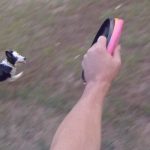 Flatwork is the stuff that happens between the catches. How the team moves and transitions, often without the disc, is flatwork. Flatwork concepts in disc dog are taken from the agility and herding... More.
Flatwork is the stuff that happens between the catches. How the team moves and transitions, often without the disc, is flatwork. Flatwork concepts in disc dog are taken from the agility and herding... More.
We’ll hit on this interior flatwork angle and explore complex Set Up Moves in Part II…
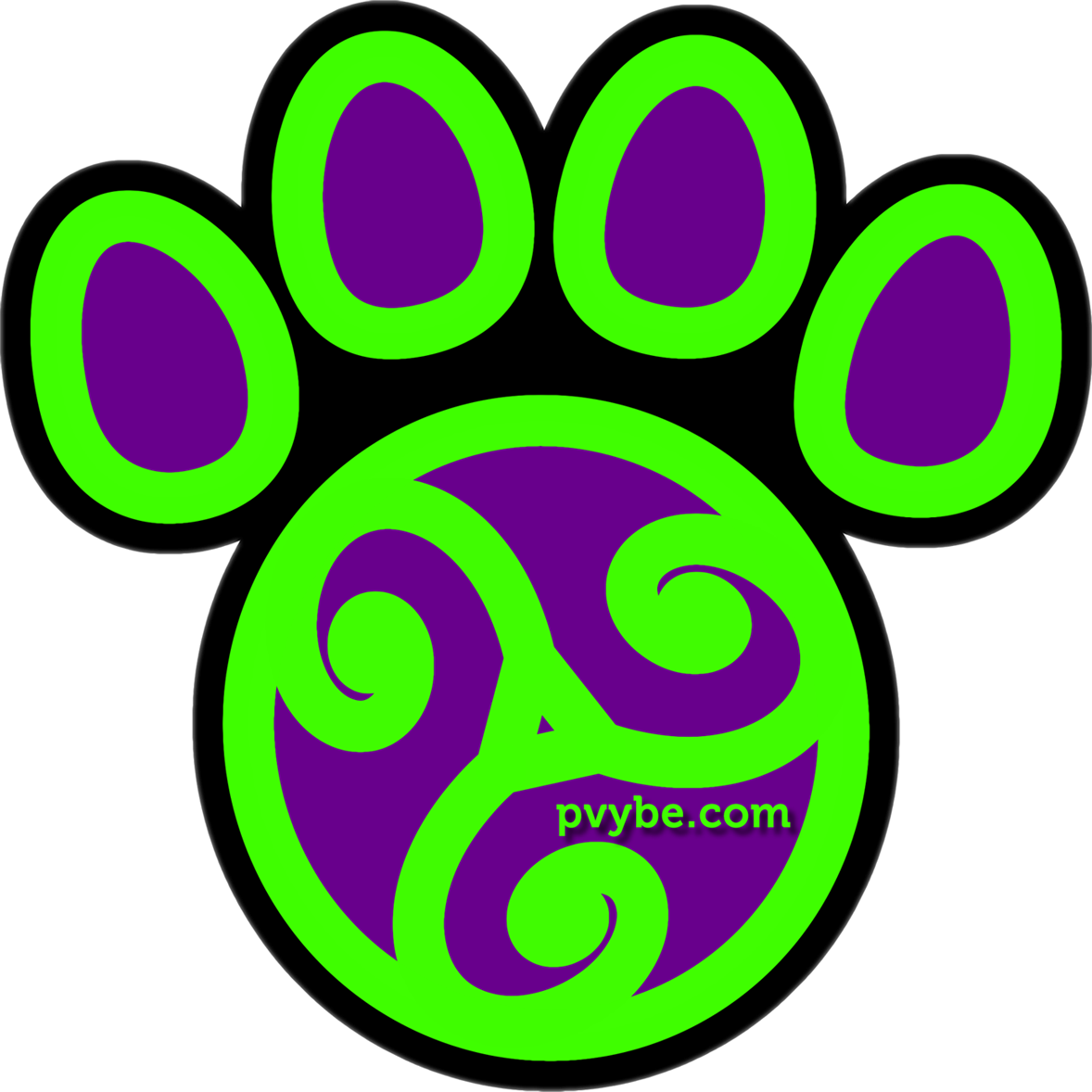


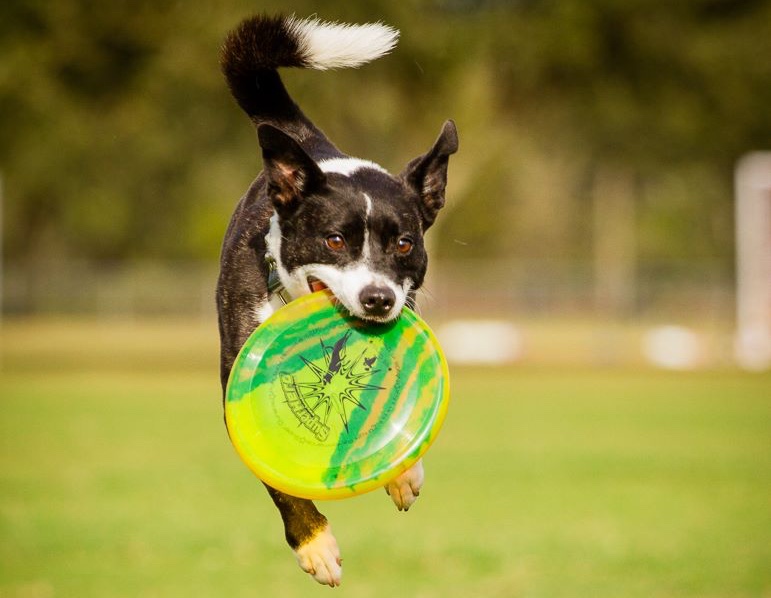
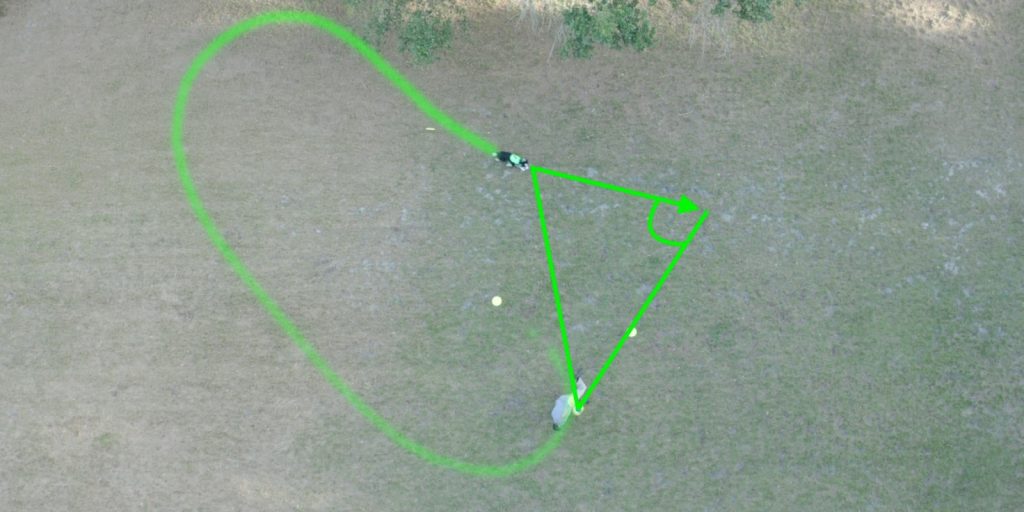
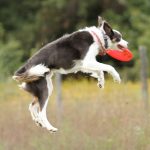
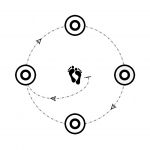
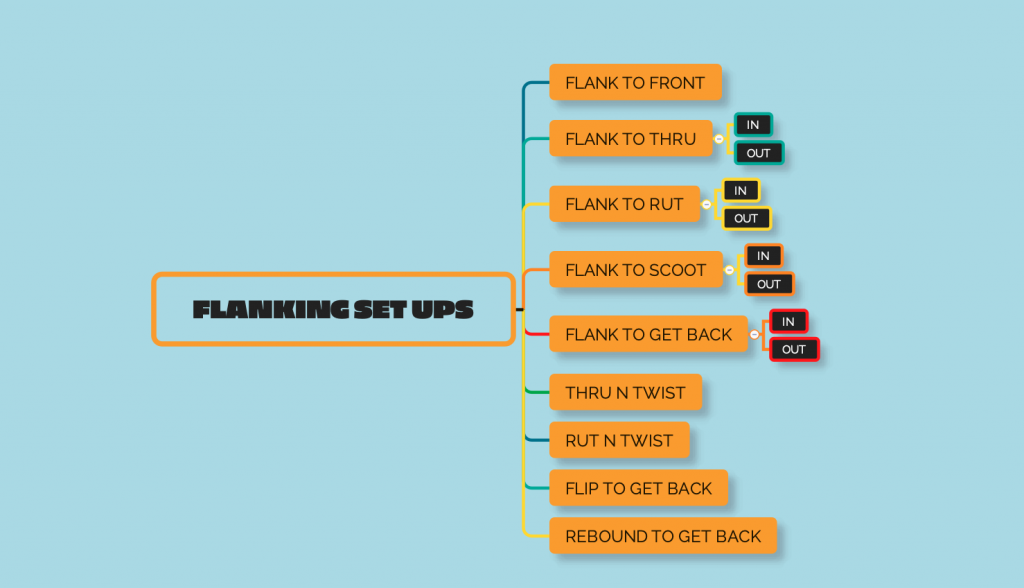
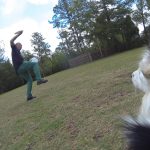
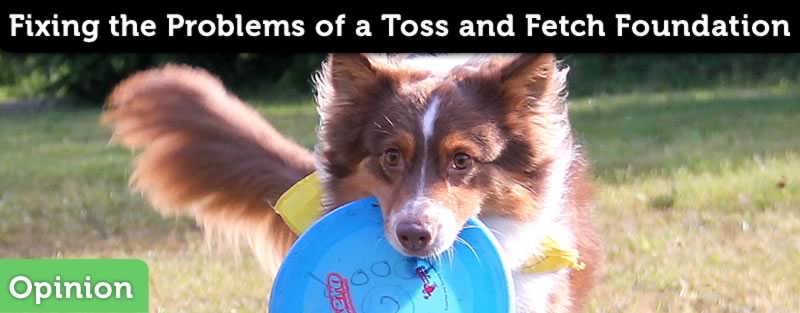
Responses